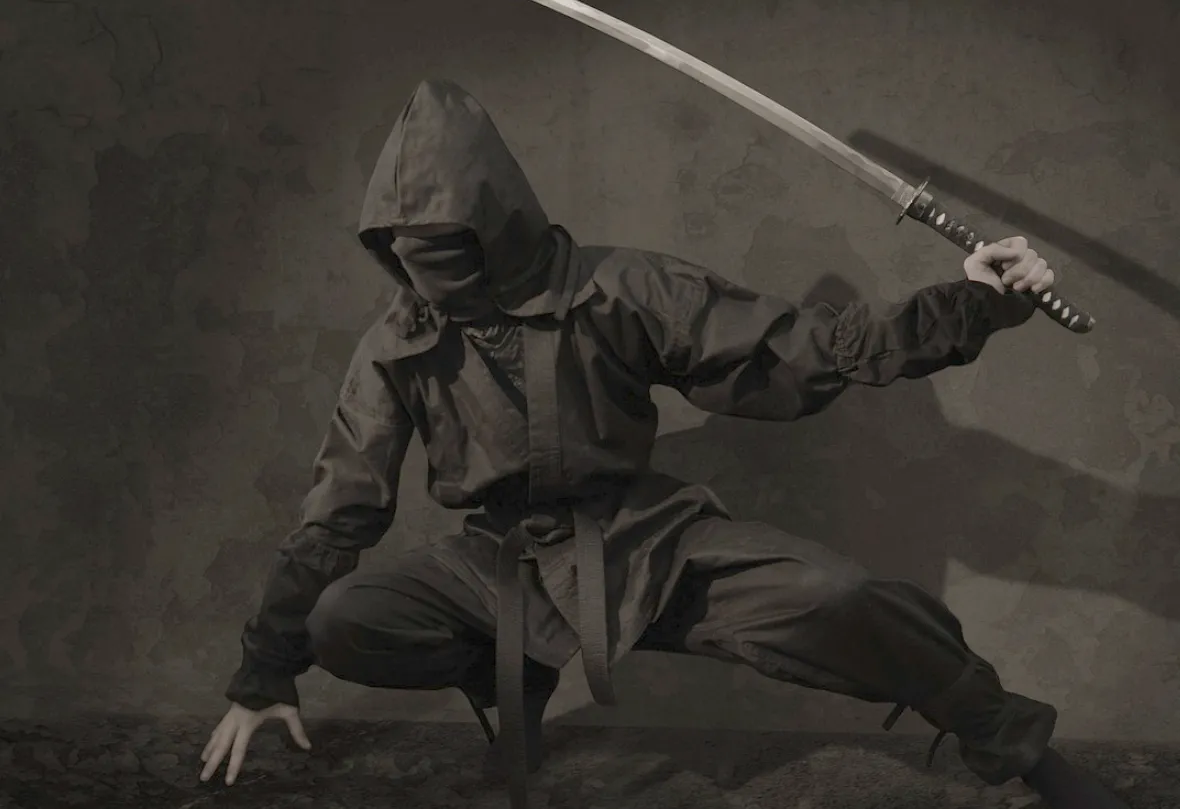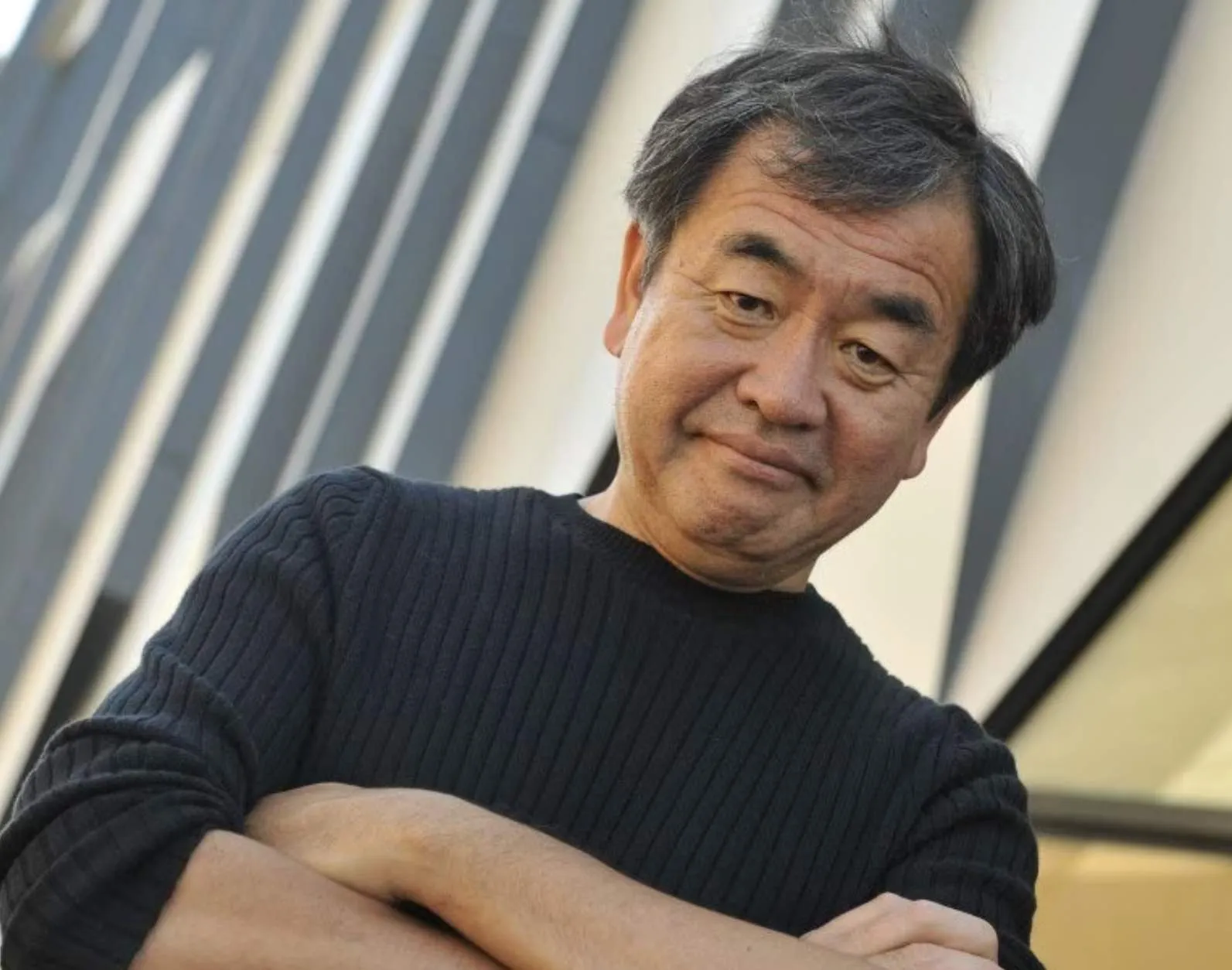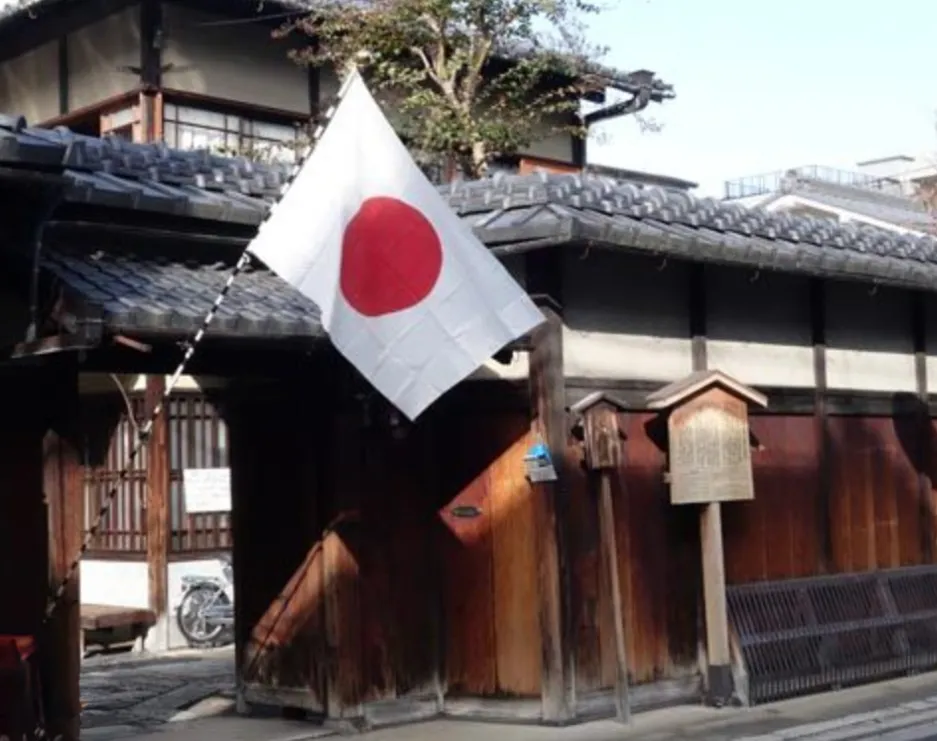Japan’s Nijo Jinya Hotel: A Paradise for Ninja Spies
Listen to A History of the World in Spy Objects: Kengo Kuma: Nijo Jinya Hotel
In the enigmatic realm of Japan's Nijo Jinya hotel, the walls echo a forgotten world of conflict, drama, and suspense. The historic Kyoto inn is thought to have once entertained Japanese feudal lords who conspired against the Shogun military dictator while Ninja spies listened in, hidden from view in secret corridors and crevices.
Kengo Kuma, one of the world’s most celebrated architects, finds inspiration in such furtive places, reveling in the clandestine world of secrets and Ninja spies. “This, as a hotel, is a kind of paradise for Ninja,” Kuma tells The History of the World in Spy Objects podcast. “The detail was so sophisticated and the materials were so elegant it was considered the best small hotel in Kyoto.”
The best - and the sneakiest.

The Nijo Jinya spy hotel
The Nijo Jinya guest house is shrouded in mystery. Some believe the small, gated inn was built in the 19th century. Others link it to Japan’s Edo era, the period around the early 1600s to 1868 known for its power struggle between two distinct groups - the Emperor in Kyoto and the Shogun military ruler in Edo (now Tokyo).

Japan had a complicated political system at that time. While the Shogun may have held power in Edo, it was an uneasy arrangement so the military ruler relied on Ninja spies to gather intelligence about the Emperor, his family, and the Daimyo feudal lords who held regional control.
This is where the hotel Nijo Jinya came into play. The elegant hotel near Kyoto castle was an ideal setting for the Emperor’s cohorts and Japan’s feudal lords to meet and conspire against the ruling Shogun. In the intricate dance of power, Ninja spies loyal to the Shogun infiltrated the hotel.
While the inn is a seemingly ordinary building to the untrained eye, its wooden frame is flexible enough to house clandestine corridors, secret staircases, and hidden doors - a plethora of quirks designed to protect the privacy of its prestigious clientele that were exploited by savvy Ninja spies.

Secrets of Nijo Jinya's Defensive Architecture
Nijo Jinya's guests were the most powerful people in feudal Japan, so security was a tight. There are hiding places between cupboards, as well as low ceilings in hallways to discourage swordplay.
Some hotel closets have back doors. There are also soundproofed hiding places for bodyguards, escape openings, secure places for valuables, and areas built with acoustic ingenuity to allow guests to hear the conversation below them.
.webp)
The inn's defensive architecture includes Mushagakure, a secret watch room built in the ceiling of the big hall that isn't visible from the guest seating area.
Alongside the guard hideouts, the guest house has a hidden, pull-down stairwell that converts into a shelf and timber struts that double as an escape ladder.
"The brand new social experience where you activate your gaming skills as you train like a spy."
- TimeOut
Take on thrilling, high-energy espionage challenges across different game zones.

Ninja Spy Paradise Hotel
As architect Kengo Kuma delved into the depths of the Nijo Jinya guest house, he marveled at the sophistication of its design - so much so Kuma has incorporated elements of concealment into some of his own wooden buildings, recognizing the unique possibilities that wood offered in creating Nijo Jinya’s secrets.

“It looks like a normal building but hidden devices were everywhere,” Kuma said. “For concrete buildings, it is not always easy to make that kind of device. But for wooden buildings, we could make anything. We could hide anything.”
Today, the echoes of a bygone era resonate through the silent walls of Nijo Jinya. Although the specific details may be lost to time, the legend of this hotel continues to inspire architects keen on incorporating wooden features that whisper the secrets of Japanese tradition.

%20(1).webp)
SPYSCAPE+

Join now to get True Spies episodes early and ad-free every week, plus subscriber-only Debriefs and Q&As to bring you closer to your favorite spies and stories from the show. You’ll also get our exclusive series The Razumov Files and The Great James Bond Car Robbery!


Gadgets & Gifts
Explore a world of secrets together. Navigate through interactive exhibits and missions to discover your spy roles.
Your Spy Skills
We all have valuable spy skills - your mission is to discover yours. See if you have what it takes to be a secret agent, with our authentic spy skills evaluation* developed by a former Head of Training at British Intelligence. It's FREE so share & compare with friends now!
* Find more information about the scientific methods behind the evaluation here.


Stay Connected
Follow us for the latest
TIKTOK
INSTAGRAM
X
FACEBOOK
YOUTUBE